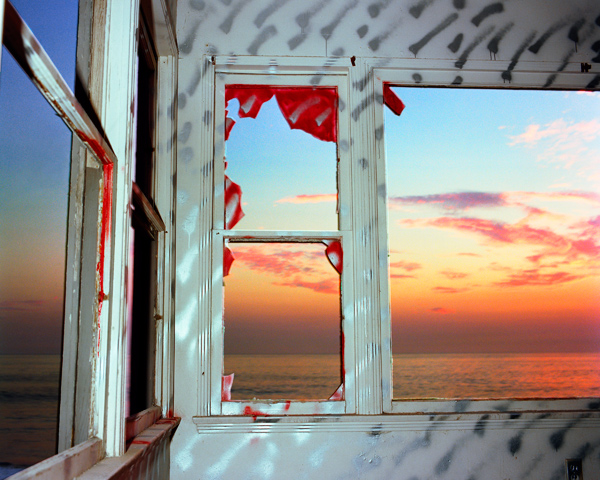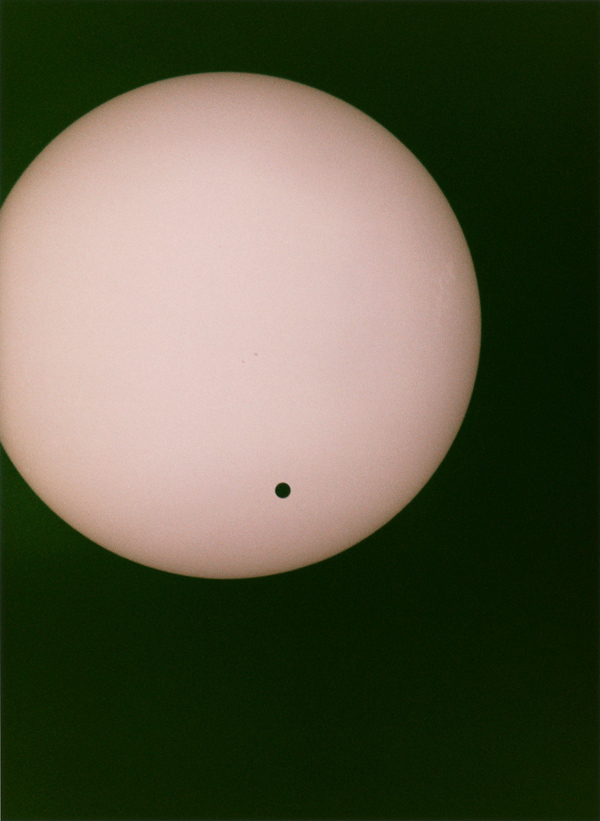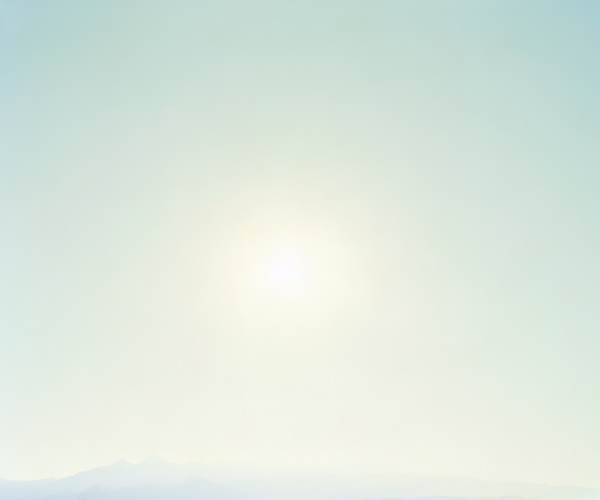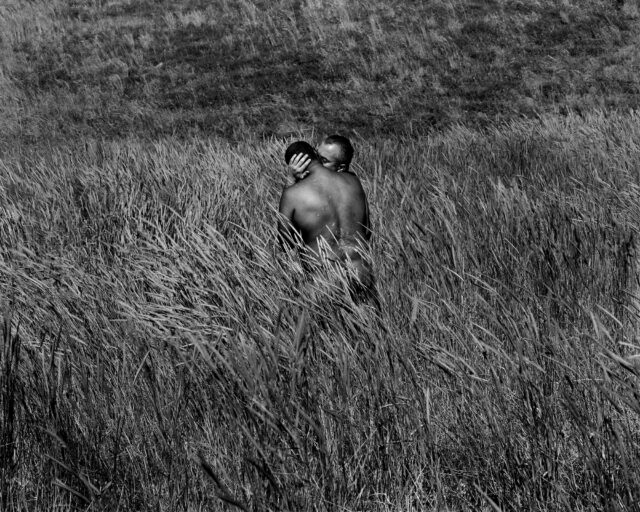Here Comes the Sun
At the Columbus Museum of Art, photographers look to the light in the sky.

John Divola, Zuma #21, 1977
Courtesy the Columbus Museum of Art
Charles Baudelaire once derided photographers as “sun worshippers”—mere transcribers, rather than visionary creators. And indeed, for most of its short history, photography has been defined by light—the play of shadow, the capture of tonal range or photonic energy, while the sun has long endured as a metaphor, down to the medium’s first name, heliography, the “sun writing” coined by the Niépce brothers in 1820s France. But can the sun itself be the subject of a photograph? Can it be charted only indirectly, by its various reflections and refractions? Staring into its fiery depths, are we blinded in the act of looking, all recognizable forms obliterated into abstraction?
These questions are taken up in The Sun Placed in the Abyss, the recent exhibition organized by Drew Sawyer at the Columbus Museum of Art, which draws together dozens of works made not in the age of Niépce or Baudelaire, but since 1970. January 27, frame 9 (2012) is an image and a prompt by Zoe Leonard: a field of gray, diffuse but punctuated with a halo of white, like the pinprick orbs that float on the retina on a cloudless day. The photograph is a large gelatin-silver print, but it could easily be mistaken for a painting in its near-total abstraction. The accompanying text reminds us that the sun is “what makes photography possible, but it is impossible to really depict it.” Most of The Sun Placed in the Abyss is a spectrum of solutions to this problem, from dead-on looking to the deep parallax of allegory and irony.

Wolfgang Tillmans, Venus transit, 2004
Courtesy the Columbus Museum of Art
What’s refreshing here is Sawyer’s embrace of crucial horizons in photography that had long fallen out of fashion yet stubbornly persist in many contemporary practices, most notably the Romantic tradition in landscape (think Turner or Bierstadt) or the material splendor of analogue, alternative, or antique processes. To this extent, the obligatory Richard Prince montage, or Anne Collier’s appropriation of kitsch postcards of sunsets, tick the right boxes—of dutiful scrutiny, or knowing irony. But the most interesting conceptual strategy here is Dan Graham’s 67-second super-8 Binocular Zoom (1969-70), which merges otherworldly lens flare with a Warholian banality of city rooftops.
Instead, The Sun Placed in the Abyss shines when it includes photographers who unabashedly take on heliography as a formal route. The Californian Chris McCaw is here, with one of his silver gelatin photograms—the images he makes with military lenses and custom paper in which solar radiation burns holes in the negative. McCaw’s work is in dialogue with peers like Ryan Foerster and forebears such as Hiroshi Yamazaki, whose ’70s-era series Observation: The Sun captures the sun’s arc as a searing tracer on the horizon. Foerster’s Sun Blast (2013) is the monotypic husk of chromogenic chemistry left in the sun—it lands somewhere between surrealist experiment and nuclear incident.

Trevor Paglen, Reaper in the Sun, 2013
Courtesy the Columbus Museum of Art
Contemporary artists who engage with such solar lineage find unexpected trajectories in their otherwise familiar practices. Catherine Opie’s Sunrise and Sunset pictures from 2010 are taken from the deck of a transoceanic voyage on a cargo ship. Opie reinvigorates the genre of sublime seascape, charting distant horizons and moody shifts in light and shadow, but she also visualizes the flows of capital that define the Pacific Rim.
Wolfgang Tillmans looks to the heavens, and follows the transit of Venus across the Sun—a not-quite eclipse usually invisible to the naked eye, but rendered here in lavender hues and on a monumental scale. Others ponder the all-seeing sky. Trevor Paglen’s striking Reaper in the Sun (2013) is a print on the scale of history painting. From across the room it’s as alluring and abstract as a Rothko, but on closer inspection there is a faint trace of a new world order, of two decades of warfare fought from above by unseen forces. Omnipresent and elusive as the sun itself, a tiny drone strafes a bleached sky.
The Sun Placed in the Abyss is on view at the Columbus Museum of Art through January 8, 2017.


























